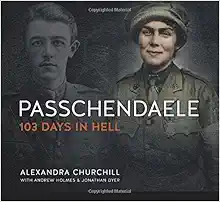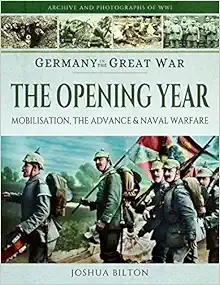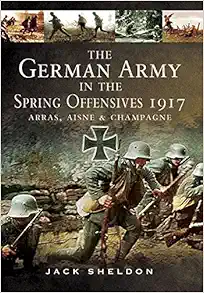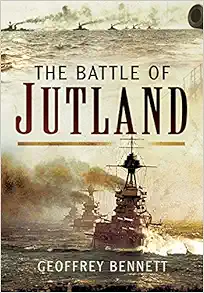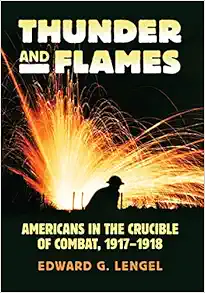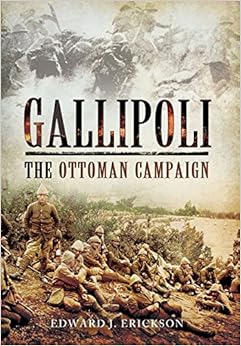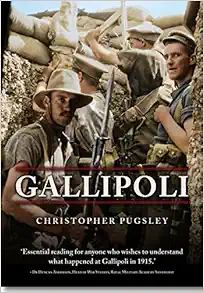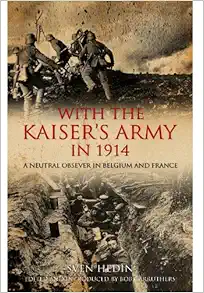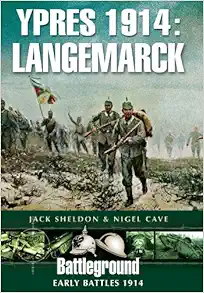Nomonhan and Okinawa: The First and Final Battles of the Pacific War
By Larry Parker
Introduction
All man's activities impact not only the present but also the future[1], none more so than war. As Winston Churchill remarked, "Great battles change the entire course of events, create new standards of values, new moods, in armies and in nations." War sends major and minor shock waves through time affecting distant generations in ways unimaginable in the present. These influences may be as trivial as shorter hemlines to conserve fabric or steel pennies in place of copper or as significant as an 'Iron Curtain' separating former allies and heralding a fifty-year Cold War. On a grand scale, empires may rise or fall with a single battle. More immediately, wars dramatically impact families, continuing some lines, brutally ending others. As Herodotus observed, "In war, fathers bury sons rather than sons fathers."
This paper examines the confrontations at Nomonhan and Okinawa, the first and final battles of the Pacific War, appraising not only the immediate consequences of these encounters but also their long-term effects.
Nomonhan
Background
An editorial in the 20 July 1939 New York Times described the conflict between the Soviet Union and Japan on the border of Outer Mongolia and the puppet state of Manchukuo as "A strange war raging in a thoroughly out-of-the-way corner of the world where it cannot attract attention." Indeed, geography, the compulsive secrecy second nature to both combatants and the subsequent outbreak of World War II in Europe combined to overshadow this little known but nonetheless critical, battle. Boasting the most extensive use of tanks and aircraft since World War I, Nomonhan or Khalkin Gol, as it was called by the Soviets, impacted World War II in areas far beyond the immediate scope of the battlefield.
Nomonhan was the culmination of nearly fifty years of Russo – Japanese rivalry in the Far East. The Russo – Japanese War of 1905 followed Japan's occupation of Korea. Japan then antagonized the new Soviet state when she intervened in Siberia during the Russian Civil War. Japan's seizure of Manchuria, renamed Manchukuo, in 1931 created a 3000-mile border between two suspicious, hostile, diametrically opposed ideologies. The Changkufeng / Lake Khasan incident of 1938 was but a dress rehearsal for further hostilities. Consequently, what began as a minor clash between Soviet sponsored Mongolian cavalry and Japanese supported Manchukuoan cavalry on the Halha River rapidly escalated into a major campaign with far reaching consequences.
Description
In May 1939 Soviet units crossing the Halha River into disputed territory were driven back by Japanese forces but immediately returned the following day in greater strength. Reacting to this affront the Kwantung Army dispatched the Yamagata Detachment with orders to drive the invaders out and seal the border. In the ensuing battle one regiment was encircled and destroyed, the remaining troops routed and driven from the field. Acting against direct orders from Tokyo the Kwantung Army unilaterally decided to retaliate sending the 23rd Infantry Division augmented by two tank regiments plus significant artillery and air support to settle the issue.
Phase two of the offensive began in early July with the 23rd Division crossing the upper reaches of the Halha while mechanized elements struck directly at Soviet forces on the right bank of the river. After making some initial gains the Japanese attack stalled. When the Soviets counterattacked, the Japanese found their lightly armored and under gunned tanks hopelessly outclassed by Soviet BT models. The Japanese rushed additional infantry, armor, aircraft and heavy artillery to the front, renewing the offensive in late July. Stopped cold, the Japanese now dug in and waited.
The Soviets also pushed strong reinforcements, many of them veterans of the Spanish Civil War, to the region and their logistics system proved remarkably adept considering the distances involved. On 20 August they launched a two pronged mass attack. In a pattern that would become all too familiar to the Wehrmacht, mechanized units, heavily supported by artillery and aircraft, spearheaded the assault. Japanese lines crumbled. Threatened with encirclement, her shattered forces fell back. Only the German invasion of Poland prevented their complete destruction and further Soviet exploitation. Recognizing Hitler as the greater danger and anxious to avoid a two front conflict the Soviets offered a cease-fire in mid September, which the battered Japanese eagerly accepted.
Consequences
At the battles peak the Japanese fielded approximately 75,000 men, the Soviets perhaps 100,000. While the Russians claimed 50,000 enemy casualties the Japanese acknowledged losses of 8,400 killed and 8,766 wounded. The Soviets conceded 9,284 casualties. A relatively minor engagement by World War II standards, why is Nomonhan significant?
• The Kwantung Army demonstrated it was a law unto itself making policy decisions rightfully the purview of the government. Its continued obsession with China and independent actions there eventually destroyed Imperial Japan.[2]
• Nomonhan launched the career of General Georgi Konstantinovich Zhukov[3], future Marshal of the Soviet Union, savior of Moscow, Leningrad and Stalingrad, and architect of the crushing Soviet counteroffensive that began at Kursk and ended in Berlin.
• Zhukov's methods – elaborate defense in depth; intricate deceptive measures; mass artillery, aircraft and armor; battles of encirclement and methodical destruction; complete disregard for human cost – became the stock and trade of the Red Army.
• Observing Soviet actions in Finland rather than Nomonhan, Hitler drew erroneous and ultimately disastrous conclusions regarding the Red Army's capability and resilience. Stalin's purges decimated the Red Army Officer Corps. Consequently inexperience, inadequate training and pure fear of Stalin's displeasure resulted in a prodigious waste of manpower. When capably led by an experienced general such as Zhukov, who escaped Stalin's paranoid cleansing of all possible rivals, the Red Army was still a credible force.
• Nomonhan revealed critical weaknesses in Japanese arms, armor, tactics, doctrine and especially logistics. The lessons learned led to the creation of triangular (heavy) divisions designed and equipped to meet the Soviets on equal terms and pentagonal (light) divisions organized to fight the Nationalist Chinese and for counter insurgency operations.
• Until Nomonhan the Japanese favored a Northern or Army strategy of continued expansion in China and eventual war with the Soviet Union. This shocking defeat convinced the Japanese to adopt a Southern or Naval strategy centered on the vital resources of Southeast Asia even at the cost of bringing the United States into the war. In so doing Imperial Japan turned away from possible victory (a coordinated Axis attack on Russia in 1941) to certain defeat (war with America).
Okinawa
Background
Okinawa is the largest and most important island of the Ryukyu group. Located just 400 miles south of the four main islands of Japan, Okinawa was the linchpin of Japan's inner defensive perimeter. If the Empire was to survive, the Americans must be stopped at Okinawa. Equally vital to Allied strategic goals, the planned invasion of Okinawa was the culmination of a two pronged drive that began in the Central and Southwest Pacific after Midway. With Okinawa in its possession the Allies could tighten the blockade of Japan, intensify the bombing campaign against her industry and stage the men and materials necessary for an invasion of Kyushu. Given its strategic importance, ample time to prepare and the enormous resources allocated by both sides Okinawa earned the dubious distinction as the largest amphibious invasion, last major campaign and bloodiest battle of the Pacific War. As with Nomonhan however, other actions overshadowed the battle and its significance was lost in the rush of events following the death of President Roosevelt 12 April, the surrender of Germany 08 May and the detonation of atomic bombs over Hiroshima and Nagasaki in August 1945.
Japanese Plans
Under the initial Tei-Go plan formulated by Imperial Japanese Army Headquarters (IJA HQ) the Ryukyus and Formosa were to form an impenetrable zone of mutually supporting air bases, each with a cluster of airfields. While planes were abundant, by 1945 experienced pilots were not. In addition aggressive American submarine patrols made it impossible to deliver sufficient quantities of fuel, ammunition, anti-aircraft artillery, construction equipment, building materials and supplies to carry out such an ambitious operation. Lieutenant General Mitsuru Ushijima, commander of the 32nd Army, charged with the defense of Okinawa, possessed a more pragmatic appreciation of strategic and tactical realities. Thirty years of established doctrine[4] dictated an offensive response to any American invasion. Ushijima took a more reasonable approach however. Realizing the beaches would be untenable due to overwhelming American firepower Ushijima decided to abandon them as well as the northern portion of Okinawa. Instead he resolved to dig deep, contest the chosen ground foot by foot and counterattack selectively. In choosing an area strategically critical to the capture and control of Nakagusuku Bay and Naha Harbor yet favorable to defense and thoroughly preparing it Ushijima was able to maneuver offensively but fight defensively.
The Citadel
Concentrating his forces in the highly defensible and strategically critical southern portion of the island, his men constructed a defensive citadel of fantastic proportions. Realizing survival depended upon their own initiative the men of 32nd Army threw themselves into the project. Working almost entirely by hand they created an intricate defensive complex of pillboxes and gun emplacements 3 – 12 miles wide by 16 miles long. Sixty miles of tunnels honeycombed the complex with defensive positions above and below ground. Ushijima chose his battleground well. The hilly and irregular terrain of southern Okinawa provided numerous interlocking, mutually supporting fields of fire. Natural caves were expanded and connected to shelter the entire army. These caves functioned like warships with engineering, command, weapons and crew spaces. Vast quantities of food and ammunition were laid up for a prolonged siege. Okinawa began to resemble Iwo Jima on a much greater scale, dug into solid earth and stone rather than soft lava rock. One flaw marred Japanese preparations. Since each unit was responsible for fortifying its own assigned area with little inter-unit coordination the various sections were not well interconnected. Once battle began the units suffered from poor communications especially in calls for artillery support.
Japanese Order of Battle (OOB). Ushijima mustered an impressive force on Okinawa – 67,000 regular army combat and support troops augmented by 9,000 naval personnel, 24,000 militia (Boeitai or Home Guard) and 15,000 laborers. During the course of the Pacific conflict a great deal of war materiel had been shipped to Okinawa destined for outlying areas. As American submarine actions reduced Japanese shipping capacity many of these stores were stranded on Okinawa. Ironically the same submarine patrols that reduced the effectiveness of other island garrisons ensured 32nd Army was well supplied. The following chart provides an overview of the Japanese Order of Battle (OOB).
| Unit | Strength | Subtotal |
| 32nd Army HQ | 7,055 | |
| 24th Infantry Division | 14,360 | |
| 62nd Infantry Division | 11,623 | |
| 44th Independent Mixed Brigade | 4,485 | |
| 21st AAA Command | 3,131 | |
| 27th Tank Regiment | 750 | |
| 19th Air Sector Command | 4,303 | |
| 66th Engineering Unit | 1,085 | |
| 215 & 259 Motor Transport CO | 363 | |
| 49th Communications Unit | 2,641 | |
| 3rd Independent Anti-tank BN | 1,262 | |
| 3rd Independent Machinegun BN | 1,349 | |
| 11th Shipping Group | 9,112 | |
| 5th Artillery Command | 5,098 | 66,617 (Army) |
| Imperial Japanese Naval Forces | 8,825 | 75,442 |
| Boeitai (Home Guard) | 23,350 | 98,792 |
| Impressed Labor Forces | 15,000 | 113,792 |
Let us now consider some of the major units in greater detail:
• Drawing upon previous experience the Kwantung Army organized the 24th Infantry as a triangular division with three companies per battalion, three battalions per regiment and three regiments per division. Designed to fight the Soviets on equal terms the 24th also enjoyed abundant combat support units with artillery, engineers, transport, anti-tank and reconnaissance elements organic to each regiment.
• In contrast the 62nd Infantry was a pentagonal division comprised of five companies per battalion, five battalions per brigade and two brigades per division. Organized by the China Expeditionary Army to fight against other light infantry forces and for counter insurgency operations the 62nd enjoyed some engineering, medical, signal and artillery elements at Division level but possessed little heavy firepower or mechanized transport.
• The 44th Independent Mixed Brigade (IMB) was another heavy unit composed of two triangular regiments.
• The 5th Artillery Command boasted four regiments of 150-mm howitzers and cannons. The 21st Anti-aircraft artillery command, 3rd Anti-tank Battalion and divisional artillery added one hundred-seventy 75-mm artillery pieces, seventy-two 75-mm anti-aircraft guns, twenty-four 320-mm Spigot mortars and ninety-six 81-mm mortars as well as numerous smaller caliber weapons to the mix. Each weapon was strategically sited and carefully emplaced for maximum effectiveness.
• The 27th Tank Regiment consisted of one heavy company of 14 tanks, one light company of 13 tanks, an artillery battalion, an infantry company, a maintenance company and an engineering platoon.
• 9,000 naval personnel were stationed at Oroku Naval Air Base. Arming themselves with excess army weapons and machine guns cannibalized from disabled aircraft these men were converted to light infantry forces and proved rather effective. 17,500 men in various sea raiding squadrons, airfield battalions, service and support units were also reorganized and converted into light infantry.
• On 01 January 1945 the 32nd Army Staff ordered total mobilization of all Okinawan males over the age of 18. Of the 39,000 men drafted 24,000 were formed as Boeitai or Home Guard. Another 15,000 labored on the vast defensive complex under construction.
Allied Forces.
Well aware of Okinawa's strategic importance to Japan and hoping to avoid a repeat of Iwo Jima the Allies assembled a vast armada for Operation Iceberg.
Allied Order of Battle
| 5th Fleet | Spruance | Overall Command |
| Task Force 57 | Rawlins | Air Defense & Support Operations |
| Task Force 58 | Mitscher | Air Defense & Support Operations |
| Landing Force | Turner | Naval Gunfire, Amphibious & Supply Support |
| 10th Army | Buckner | Overall Command |
| XXIV Corps | Hodge | 7th, 27th, 77th & 96th Infantry Divisions |
| III Amphibious Corps | Geiger | 1st, 2nd, 4th & 6th Marine Divisions |
Looking at some of the major units in greater detail reveals the extent of Allied preparations:
• TF57, under Vice Admiral Sir Bernard Rawlins, Royal Navy, consisted of four carriers with armored decks (an innovation the Americans would soon envy and later copy), two battleships, five cruisers and fifteen destroyers.
• Ten battleships, nine cruisers, twenty-three destroyers and 117 rocket gunboats comprised the bombardment group. On D-Day they unleashed a 'storm of steel' or Tetsu no bow of 44,825 rounds five inch or greater, 33,000 rockets and 22,500 mortar shells. Unfortunately for the infantry and marines about to go ashore Japanese redoubts proved impervious even to sixteen-inch shells.
• Designated as 5th Fleet, Admiral Spruance commanded forty carriers, eighteen battleships, 200 destroyers, 365 amphibious vessels and hundreds of support ships and landing craft – 1,300 vessels in all.
• 10th Army mustered no less than 183,000 soldiers and marines 60,000 of whom landed on the Hagushi Beaches on the first day.
The Battle
The battle for Okinawa may be divided into four phases:
1. Advance from the Hagushi Beaches to the East Coast bisecting the island 1 – 4 April
2. Clearing the Northern portion of Okinawa 15 – 18 April
3. Capture of the outlying islands 10 April – 26 June
4. Reduction of the Southern citadel 6 April – 21 June
a. Assaulting the Shuri Line
b. 04 May counterattack
c. Withdrawal to Kiyamu Peninsula
d. Gyokusai
According to plan, the Japanese did not contest the beaches of Okinawa. Consequently, the 1st and 6th Marine Divisions along with the 7th and 96th Infantry Divisions landed virtually unopposed on 01 April 1945 and immediately pushed inland, securing Yontan and Kadena Airfields and establishing a solid beachhead fifteen miles long and 3 – 10 miles deep on the first day. By 4 April American forces reached Chimu Bay on the East Coast bisecting the island. As some elements turned north, major forces pushed south. The easy advance ended and the bloodbath[5] began on 8 April when American forces reached the Shuri line.
Terrain and Ushijima's careful preparations forced the Americans to fight a thousand small firefights in isolated pockets rather than one large battle in the open where their vastly superior firepower would prevail. Paying a heavy price in killed and wounded initially, the soldiers and marines of 10th Army learned to take advantage of small gaps in arcs of fire to isolate and destroy Japanese positions one by one. In a relatively even contest between American tank / infantry teams and Japanese pillbox / infantry teams casualties mounted. The mobile warfare and flanking movements of Europe were impossible. Movement stagnated and, reminiscent of World War I, progress was measured in yards. Monsoon rains began at the end of May turning the battlefield into a putrid morass, part garbage dump and part graveyard. As conditions deteriorated, sanitation problems increased and disease ravaged both armies.
From beginning to end a personal battle raged between Ushijima's subordinates. The more doctrinaire Chief of Staff, General Isamu Cho, urged an immediate counterattack while the more pragmatic Senior Operations Officer, Colonel Hiromichi Yahara, urged prolonged defense. The stalemate between the opposing forces and on the 32nd Army staff continued until 04 May. At the insistence of Cho and IJA HQ Ushijima acquiesced to a major counterattack. The four-day battle was a disaster. By abandoning their protective caves and tunnels and coming out into the open the 32nd Army lost most of its artillery and first rate combat troops. Without sufficient men to hold the Shuri line Ushijima now had no choice but to retreat to the Kiyan Peninsula, reform and fight on. Movement began on 23 May while rearguard actions held the Americans in place until the operation was complete. So skillful was the withdrawal that US forces were caught totally unaware. When the Americans followed on 01 June the remnants of the 24th Division held the right flank of a new line anchored on Mount Yoko Dake. The 44th IMB held the left wing with the 62nd Division protecting the coast and acting as a reserve. The best Japanese troops had been squandered however. All that remained were Headquarters, service, support and construction units. Most telling was the loss of light and heavy weapons.
Realizing their mistake and capitalizing on the weakened condition of the enemy 10th Army redoubled its efforts. Tanks, anti-aircraft artillery, anti-tank guns, any type of direct fire, flat trajectory weapon that could be brought to bear and flame-throwers were used to drive the Japanese from the mouths of caves. This allowed infantry to approach and either clear or destroy the position. When airshafts were found GI's poured gasoline down them followed by phosphorus grenades while their buddies covered the exits. Some caves were simply sealed and bypassed. An estimated 20,000 Japanese soldiers and civilians were entombed in this manner.
By 19 June organized resistance remained only at Mabuni, final position of the 32nd, 62nd and 44th Headquarters and Medeera, final location of the 24th HQ. On 22 June Ushijima issued his "Stand to die in order" directive. In a Gyokusai[6] or 'Honorable Death Attack' each unit made final Banzai charges. His duty complete and honor preserved Ushijima wrote an elaborate letter of apology to the emperor and committed Seppuku[7] along with most of his senior officers. Still the ordeal was not over. Isolated units continued to resist and so-called mopping up operations (23 –29 June) resulted in an additional 9,000 Japanese killed and 3,800 captured.
Casualties
76,000 Japanese soldiers and sailors augmented by 39,000 Boeitai militiamen and conscripted laborers confronted US forces on 01 April 1945. Out of a total force of 115,000 only 7400 surrendered. Of these, most were recently conscripted Home Guard or impressed laborers. The remainder died for the Emperor after extracting a heavy toll from the enemy. Estimates of civilian casualties during the campaign range from 50,000 to 150,000. Taking the median figure approximately 200,000 Japanese citizens perished on Okinawa.
Allied forces paid an equally heavy price for the conquest of Okinawa as detailed below:
| Army | Marines | Navy | Total | |
| KIA | 4,582 | 2,938 | 4,907 | 12,427 |
| MIA | 93 | 0 | 0 | 93 |
| WIA | 18,000 | 13,708 | 4,824 | 36,532 |
| Non-battle | 15,613 | 10,598 | 0 | 26,211 |
| Total | 38,288 | 27,244 | 9,731 | 75,263 |
In exchange for 76,000 combat troops the 32nd Army inflicted almost the same number of Allied casualties. To put these numbers into perspective, from 01 April – 02 July, 2,500 men, women and children perished every day for 82 days.
Kamikazes
While the battle raged on land an equally fierce life and death struggle took place at sea. Determined to inflict maximum casualties on the Americans in order to discourage any invasion of the homeland during the course of the campaign the Japanese staged 896 air raids on the Allied fleet flying from bases in Japan, China and Formosa. At a cost of 7,830 aircraft, approximately half of which were kamikazes the Japanese inflicted 9,731 casualties upon the sailors supporting Operation Iceberg. In addition to the human cost 5th Fleet suffered 34 ships and craft sunk, another 368 severely damaged many beyond repair and 763 aircraft destroyed. Okinawa was the most costly single battle in US naval history.
Survivors Stories
Numbers present the big picture but the survivor's stories reveal the true horror of Okinawa. Junko Isa is such a survivor. When her village was bombed she and her family fled. All were killed except herself, her younger sister and ten-month-old brother. She writes, "I remember glancing over once to see an arm hanging from a tree branch. Just below that was a decapitated body. There were body parts absolutely everywhere. I think I became sort of numb to the sight. My father always warned me not to be captured by the Americans. They will do with you as they please he used to tell me. When I was eventually discovered, they took me to a field hospital up North where they fixed my ankle and fed me. I couldn't speak or understand English, so I had to tell them with hand gestures that I couldn't walk. They nodded and prepared two bamboo baskets, one for carrying me, and the other for my baby brother."
Okinawa rivaled the worst of the Somme or Verdun. E. B. Sledge, a 1st Marine Division veteran, wrote in With the Old Breed, "The mud was knee deep in some places, probably deeper in others if one dared to venture there. For several feet around every corpse, maggots crawled about in the muck and then were washed away by the runoff of the rain. There wasn't a tree or bush left. All was open country. Shells had torn up the turf so completely that ground cover was nonexistent. The rain poured down on us as evening approached. The scene was nothing but mud; shellfire; flooded crater with their silent, pathetic, rotting occupants; knocked-out tanks and amtracs; and discarded equipment – utter desolation…. We were in the depths of the abyss, the ultimate horror of war…. In the mud and driving rain before Shuri, we were surrounded by maggots and decay. Men struggled and fought in an environment so degrading I believed we had been flung into hell's own cesspool."
The official history of Okinawa describes a gruesome scene discovered by army troops in a small valley, "In the morning they found a small valley littered with more than 150 dead and dying Japanese, most of them civilians. Fathers had systematically throttled each member of their families and then disemboweled themselves with knives and hand grenades. Under one blanket lay a father, two small children, a grandfather, and a grandmother, all strangled by cloth ropes. Soldiers and medics did what they could. The natives, who had been told that the invading "barbarians" would kill and rape, watched in amazement and the Americans provided food and medical care; an old man who had killed his daughter wept in bitter remorse."
Commander Frederick J Becton, USN, Commanding Officer of the destroyer USS Laffey (DD-724), describes one kamikaze attack, "The action had lasted an hour and twenty minutes. We had been attacked by 22 planes, nine of which we had shot down unassisted, eight planes had struck the ship, seven of them with suicidal intent. Five of these did really heavy material damage and killed a lot of our personnel. The fires were still out of control and we were slowly flooding aft. We had lost 33 men, killed or missing, about 60 others had been wounded and approximately 30 of these seriously wounded." Miraculously Laffey survived and is now part of the memorial at Patriots Point Naval & Maritime Museum in Mount Pleasant, SC.
Aftermath
Ushijima intended to make the battle for Okinawa so costly to the Americans that they dare not repeat the ordeal on the mainland. In a note to 32nd Army he spelled out his objective – "One Plane for One Warship; One Boat for One Warship; One Man for Ten of the Enemy or One Tank." Japanese losses were closer to 10:1 than 1:1 never the less the battle gave the Allies pause. What were the immediate and long-term consequences?
• Even as the battle raged Army Engineers and Navy Construction Battalions (CB's) transformed Okinawa into a major air and naval base in preparation for the invasion of Japan. By 04 July four heavy and five medium bomber groups were operating out of Okinawa. By late July the first of twelve planned B-29 groups began arriving. So costly was the battle on land and at sea however that President Truman and his advisors began to seriously consider alternatives, i.e. – the atomic bomb.
• Casualty projections for Operation Downfall [8], both Allied and Japanese, based on the fighting at Okinawa ran in the millions lending weight to the decision to use the atomic bombs. Considering what 100,000 Japanese soldiers accomplished on Okinawa the prospect of fighting an estimated 2 million regular army soldiers plus 30 million militia troops was truly daunting.
• As terrible as the atomic bombs were the alternative was worse. General Curtis LeMay intended to assemble a fleet of 5,000 B-29's augmented by 5,000 B-24's and B-17's plus 1,000 British Lancaster bombers to carpet bomb and totally incinerate Japan prior to any American landing.
• In the final analysis the bloody resistance of 32nd Army on land and the terrible Kamikaze attacks at sea both succeeded and failed. The planned invasion of Japan was thwarted but in so doing Imperial Headquarters brought unparalleled destruction upon their land and their people.
• In some respects by insisting upon "Unconditional Surrender" the United States won the war but lost the peace. Rather than ending war the atom bomb precipitated the Cold War. The subsequent arms race gave rise to war by proxy with the Soviet Union fomenting insurrection throughout the world. It is no exaggeration to state global terrorism has its roots in the guerrilla wars of the recent past.
• The cave system of Okinawa proved an excellent counter to American firepower and mobility surpassing even the trench systems of World War I. When it constructed the tunnel system of Chu Chi, the North Vietnamese Army demonstrated it learned the lessons of Okinawa well.
• The battle of Okinawa degenerated into a matter of "body count" rather than maneuver and conquest. Young officers and NCO's took that mindset and the stereotypes of warfare in Asia with them to Korea and Vietnam.
• The lessons of the Kamikazes are a double-edged sword. In the mind of a terrorist, a minimum of technology, when combined with ideological fanaticism or religious zeal is seen as a way to achieve military parity even with the greatest super power. This equation is the basis of asymmetric warfare giving hope to any militarily backward or technically inferior foe as long as they command blind obedience. Although the kamikazes ultimately failed, the western world will continue to pay a heavy price for their actions for the foreseeable future.
• Ironically one of the stated intentions of the Greater Southeast Asia Co-prosperity Sphere has come to past – the end of colonial empires. And China, once victim to all countries with imperial ambitions is now a major power in her own right.
Conclusion
Few people know of Nomonhan. Far more recall Iwo Jima than Okinawa. Although both were pivotal events, each battle was overshadowed by subsequent actions and essentially lost to history. Yet Nomonhan influenced the course of World War II and the repercussions of Okinawa can be traced to 11 September 2001, Afghanistan and Iraq. As the United States searches for answers in the new millennium our leaders would be well advised to heed the counsel of Heraclitus, "War is the father, the king of us all." As it has in the past what happens today on the battlefields in Iraq and Afghanistan will send major and minor shock waves through time affecting distant generations in ways unimaginable in the present.
| * * * |
Show Notes
Footnotes
[1]. Consider asbestos, miracle product of the forties and fifties, bane of the eighties and nineties.
[2]. China was to Japan what Russia was to Germany – a bottomless pit into which she poured the majority of her troops and resources even as the British and Americans closed in.
[3]. Born in 1894 the son of a shoemaker Zhukov was apprenticed to his uncle, a furrier, after graduation from school. There he might have remained but historic events revealed other talents. Drafted in 1913 Zhukov served with distinction in the cavalry and was selected for NCO training in 1916. One year later he joined the fledgling Red Army where his audacity and intelligence earned him a commission in 1920. During the Russian Civil War Zhukov served with such future notables as A I Yeremenko and K K Rokossovsky. Assigned to Frunze Academy from 1929 – 1930 excerpts from his fitness reports highlighted character traits that would lead him to the top of the Red Army – "Commander of strong will and decisiveness" -"Wealth of initiative" - "Loves military matters and constantly improves himself" During his long career Zhukov earned a well deserved reputation as a tough, no nonsense commander. Envied for his success and feared for his popularity Zhukov was banished in 1946 by Stalin and again in 1957 by Kruschev.
[4]. Conceived of as a superior light infantry force the Imperial Japanese Army (IJA) relied upon rapid maneuver, bold attack and close combat to prevail. An excellent doctrine against Chinese and colonial armies these qualities were completely inappropriate when confronted by the irresistible firepower and tremendous logistic capability of US forces on restricted terrain.
[5]. General Geiger urged an invasion of the southern coast to 'open a second front'; stretch the Japanese thin and prevent reserve units from reinforcing the Shuri line. Lt. Gen. Buckner has been roundly criticized for not doing so. Certainly the manpower and amphibious capability was at hand. Instead he followed what has been termed 'a slugfest, an unimaginative, direct, frontal assault.' In his defense logistics over the southern beaches was limited and the troops that would have been used were needed to relieve battered units on line.
[6]. Literally "Smashing the Imperial Jewel"
[7]. Seppuku – ritual disembowelment / Hara-kiri – belly slicing
[8]. Operation Olympic, the invasion of Kyushu, was scheduled for November 1945. Operation Coronet, the conquest of Honshu, was planned for the spring of 1946.
Bibliography
Appleman, Roy E. Okinawa: The Last Battle . Washington DC: Department of the Army, Historical Division, 1948.
Astor, Gerald. Operation Iceberg: The Invasion and Conquest of Okinawa in World War II . New York: Dell, 1996.
Coox, Alvin D. The Anatomy of a Small War. The Soviet – Japanese Struggle for Chankufeng / Khasan , 1938. Westport, CT: Greenwood Press, 1977.
Coox, Alvin D. Nomonhan. Japan Against Russia, 1939 . Stanford, CA: Stanford University Press, 1985.
Cutler, Thomas J. The Battle of Leyte Gulf . Annapolis, MD: Naval Institute Press, 1994.
Feifer, George. The Battle of Okinawa: The Blood and The Bomb . New York: The Lyons Press, 2001.
Feifer, George. Tennozan – The Battle of Okinawa and the Atomic Bomb . New York: Ticknor and Fields, 1992.
Fuchida, Mitsuo. Midway, The Battle that Doomed Japan . Annapolis, MD: Naval Institute Press, 1992.
Gailey, Harry. A. The War in the Pacific . Novato, CA: Presidio Press, 1997.
Gailey, Harry A. "Howlin' Mad" vs. the Army . Novato, CA: Presidio Press, 1986.
Hoyt, Edwin P. The Kamikazes . New York: Arbor House, 1983.
Hoyt, Edwin P. Japan's War – The Great Pacific Conflict . New York: Cooper Square Press, 2001.
Huber, Dr. T. M. Okinawa 1945 . New York: Casemate Publishers, 2003.
Ienaga, Saburo. The Pacific War, 1931 – 1945 . New York: Pantheon Books, 1978.
Kennedy, Paul. Pacific Onslaught . New York: Ballantine Books, 1972.
Leckie, Robert. Okinawa – The Last Battle of World War II . New York: Viking, 1995.
Mayer, S. L. The Japanese War Machine .
Naito, Hatsuho. Thunder Gods . New York: Kodansha International, 1989.
Nichols, Major Charles S. Jr. Okinawa – Victory in the Pacific . Rutland, VT: Charles E Tuttle Company, 1955.
Tsouras, Peter G. Rising Sun Victorious . Mechanicsburg, PA: Stackpole Books, 2001.
Willmott, H. P. The War with Japan – The Period of Balance May 1942 – October 1943 . New York: Scholarly Resources, 2002.
Willmot, H. P. Empires in the Balance: Japanese and Allied Pacific Strategies to April 1942 . Annapolis, MD: Naval Institute Press, 1982.
Yahara, Hiromichi. The Battle for Okinawa . New York: John Wiley & Sons, 1997.
Zeiler, Thomas W. Unconditional Defeat – Japan, America and the End of World War II. New York: Scholarly Resources, 2003.
© 2025 Larry Parker.
Written by Larry Parker.
About the Author:
Lieutenant Commander Larry Parker, United States Navy, served as a Surface Warfare Officer, with afloat tours onboard USS De Wert (FFG-45) as Ordnance & Fire Control Officer, USS Portland (LSD-37) as First Lieutenant, and USS Butte (AE-27) as Operations Officer. Rotations ashore included Navy Reserve Center Cheyenne, Navy & Marine Corps Reserve Center Denver and Navy Reserve Readiness Command Region 16 Minneapolis. He retired in July 2000 and taught Navy Junior ROTC until June 2011. LCDR Parker holds a Bachelor's degree in English and History from the University of Kansas and a Master's degree in Military Studies - Land Warfare from American Military University. In his free time LCDR Parker pursues a lifelong passion for military history. His articles are the result of extensive research and personal experience in surface warfare, fleet logistics and amphibious operations.
* Views expressed by contributors are their own and do not necessarily represent those of MilitaryHistoryOnline.com.


